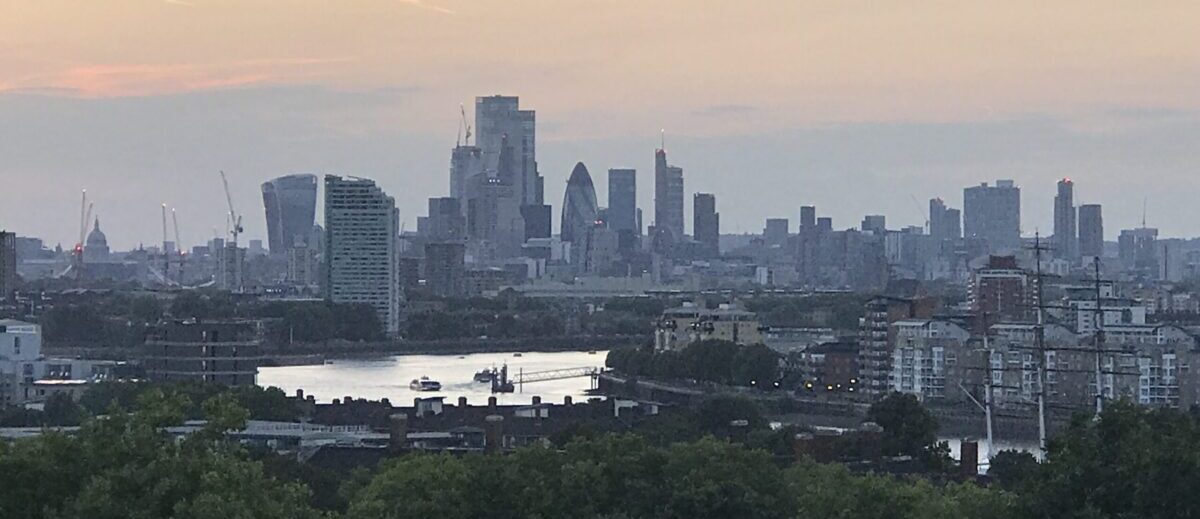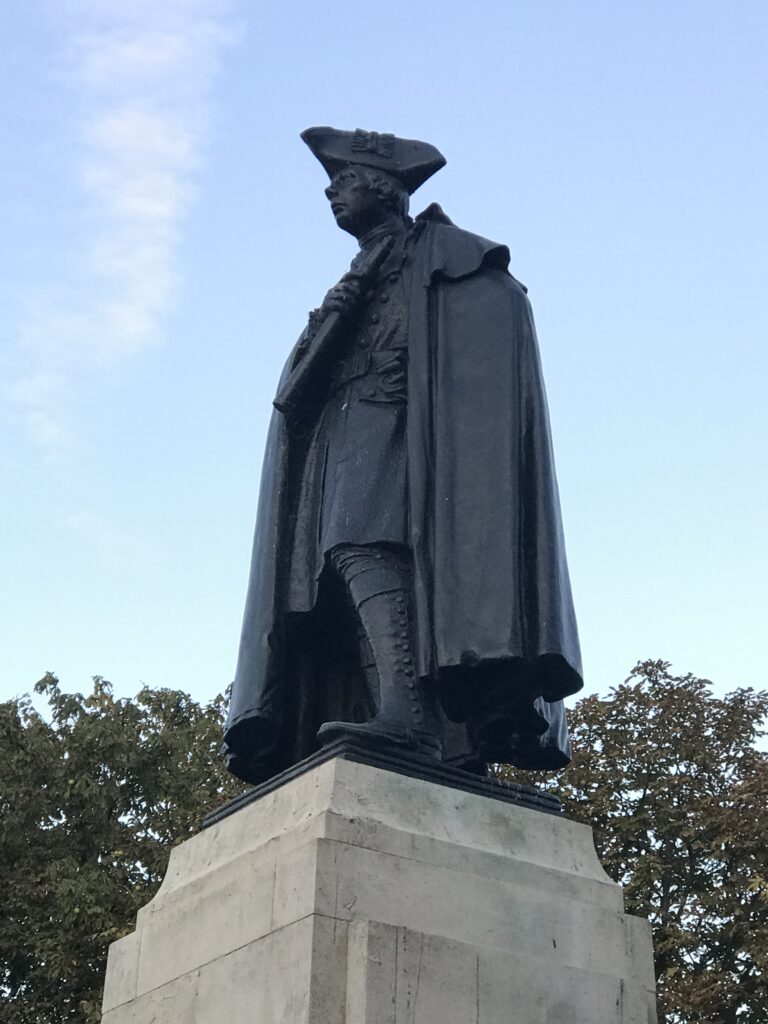
WHAT: Statue of James Wolfe
WHERE: The Royal Observatory, Greenwich (map)
BY WHOM: Robert Tait McKenzie
WHEN: 1930
From the statue of James Wolfe, next to Wren’s Royal Observatory up the hill in Greenwich Park, the whole of London seems to stretch before you. Down in front of you is Inigo Jones’s Queens’ House (‘the first classical building in England’), then the Old Royal Naval College running down to the river. Across the water are the myriad towers of Canary Wharf which, if you compare with the scene from this 1996 BBC2 short presented by Jools Holland, has grown beyond all measure over the past 25 years.
Look left – westward – and you see the curve of the Thames with the City of London beyond, with the dome of St Paul’s Cathedral standing clear. (This is one of the City’s protected views, known as ‘St Paul’s Heights’ which forbid the building of tall structures that block views of the dome from this spot).
The statue – not 10m from the prime meridian that runs through the courtyard of the observatory – was unveiled in 1930 and was a gift of the Canadian people. It is bronze, on a large stone pedestal, but there seem to be no official records of the height of either the figure or the pedestal. The sculptor was R Tait Mckenzie.
The subject – General James Wolfe – was the ‘Conqueror of Quebec’ who, in 1759 during the Seven Years War, defeated the French at the battle of the Plains of Abraham, thus establishing British dominance in North America. Wolfe was killed at the height of the battle. He was only 32 and, the British always keen to worship a dead hero, eulogised him – there is a Benjamin West painting, ‘The Death of General Wolfe’ and a very grand memorial in Westminster Abbey.
The statue was erected in Greenwich because the town is where his parents lived and where his body is buried. Repatriated after the battle, it is interred in the family vault in the crypt of Hawksmoor’s St Alphege’s church. (should you want to pay your respects there is a memorial window in the church, but the crypt is generally off limits to visitors.)
Commanding the French forces at Quebec, and also killed from wounds received at the battle, was the Marquis de Montcalm, and it was his descendent who unveiled the statue of his ancestor’s erstwhile adversary on 5 June 1930. You can read all about that, view some of the photos from the day and read a contemporary report of the event from The Times on the Royal Observatory’s site here.


